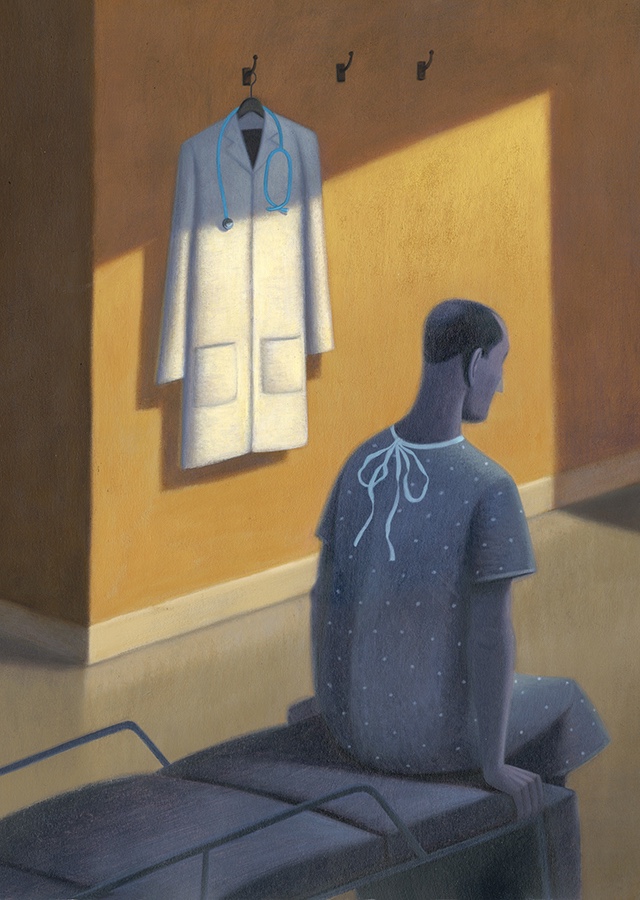I have trained many family medicine residents and medical students over the past 25 years and every so often, a student or resident would complain to me about the poor conduct or attitude of a patient. There are certainly malevolent patients from time to time but MOST of the time what you simply have is a person who is scared, in pain and/or sick–certainly not at their best–and it is incumbent on the physician (or other healthcare professional) to rise above the rancor, be the professional, and minister healing. We need to cut our patients a little slack. We should realize patients often have serious questions and concerns about their health. They may not feel well. They can be afraid or embarrassed of what sort of privacy-invasive and/or painful exam, procedure or treatment they may be subject to. Being a patient can be a scary and intimidating experience and sometimes we, as physicians, lose sight of this.
Well, I’m telling you, there is no better antidote to this lack of awareness than for the physician to become the patient.
I had that opportunity recently. I’ve had a problem with kidney stones every so often for the past 20+ years and my latest duel with these evil beasts occured recently. The urologist told me he was “dismayed” to learn what was originally thought to be a single 3 mm stone in my right ureter, was actually at least 2 stones, one exceeding 6 mm, jammed back-to-back, like some sort of Beltway traffic jam. Simply taking pain meds, drinking lots of fluids and a daily Flomax wasn’t going to cut it. I needed a little help.
So, there I was–the patient and not the doctor.
In preop, I put on a backless, drafty gown and an ugly pair of lemon-yellow anti-skid socks–nothing else. Then the IV was placed (3 attempts). Oh yes–I should mention the stirrups (guys get to use them too from time to time). Under general anesthesia, a cystoscopy with retrograde urethrogram, Holmium laser lithotripsy and right stent placement (Google it for details). Lovely post-anesthesia fog in recovery. Peeing blood and “sand” for a week. Cramps, urinary urgency, peeing constantly–dribble here, dribble there. A week later, another cystoscopy and stent removal. And many of the wonderful people taking care of me (doctors, nurses, technicians) were friends and/or patients of mine. But for all the pain, uncertainty, and “exposure,” the outcome was great and I’m extremely grateful for the care I received. I’m sure I was much better informed and aware than the typical patient but it was still a bit intimidating and pretty unpleasant.
So, to my patients: I have been reminded again. I get it.
To my colleagues: take my experience to heart and remember.
And to the American Academy of Family Physicians, the various medical specialty boards and state medical licensing authorities, I earnestly recommend continuing medical education (CME) credits for this.
Some of the best CME ever.
